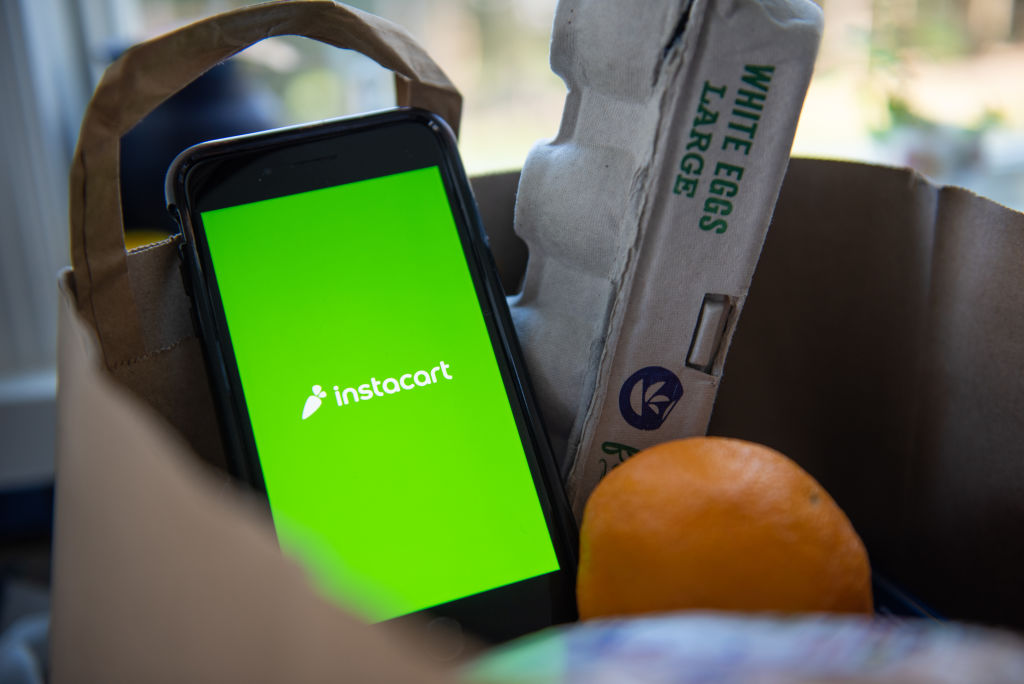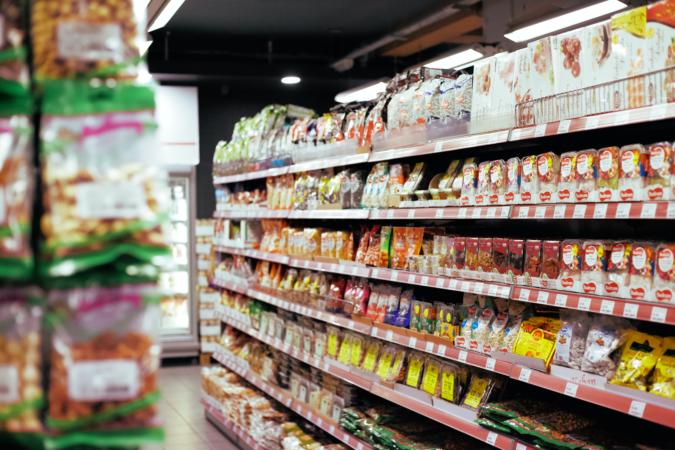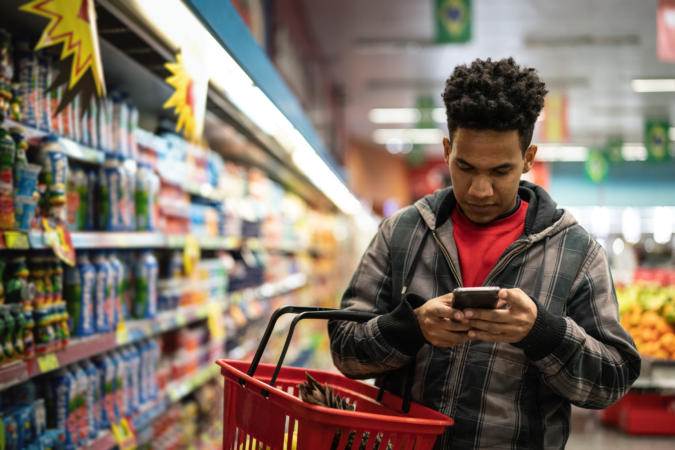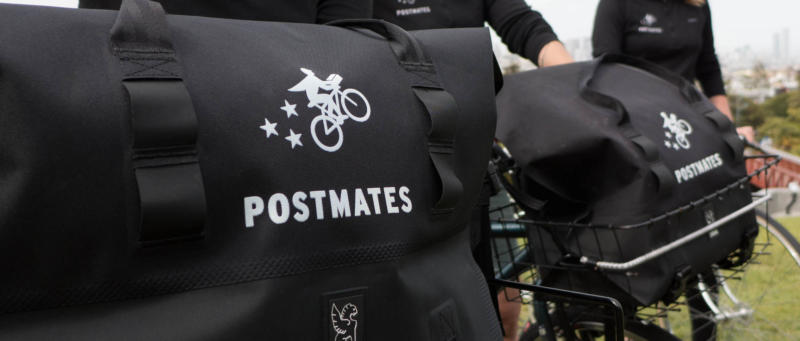Showing 10 results for:
instacart
Popular topics
All results


Instacart is using its technology to help those in need across the United States. According to a press release, the company has expanded the EBT Snap functionality within the application to 10 additional states including Colorado, Hawaii, Idaho, Louisiana, Montana, New Mexico, Oregon, Utah, Washington, and Wyoming. The latest update allows grocers of all sizes to utilize Instacart’s Carrot Payments, which allows the use of EBT SNAP benefits online. Thanks to the platform, nearly 30 million people that are experiencing food insecurity across the nation will have more access to using their benefits electronically to have their groceries delivered straight to their doorsteps. “At Instacart, our goal is to continue unlocking access to nutritious food for those who need it most. We’ve long advocated to expand online EBT SNAP acceptance, and we’re proud to bring this critical service to people in 10 additional states in partnership with grocers that people know, love and trust,” said...

A recent TikTok video had users in a frenzy over one customer’s tedious Instacart demand. According to a screenshot posted by TikTok user Violetta Le’Mone (@_instaqueen_), one Instacart customer posted a series of commands to be followed by a shopper. The screenshot listed requirements such as a mandatory image of cooling bags prior to shopping, banning the shopper from batching the order, and live updates by the shopper throughout the grocery spree. “Please send me a photo of your insulated cooling bags in your shopping cart IMMEDIATELY before shopping otherwise I will call Instacart promptly and cancel this order to reschedule with a different shopper. If you don’t have the insulated cooling bags or enough of them to keep my food items temperature-controlled, or you do not have the insulated cooling bags, but only plan on using them during delivery then DON’T PICK UP MY ORDER,” the note read. Violetta Le’Mone added she did not pick up this order. Since the video’s initial posting...

Instacart is using its latest initiative to amplify emerging Black-owned brands online. A press release reports that the digital grocery platform has announced a new $1 million advertising initiative that will showcase Black-owned consumer packaged goods (CPG) brands within the Instacart marketplace. This will mark Instacart’s first-ever program designed specifically to benefit Black-owned brands on its platform through its robust advertising resources. Through this initiative, Instacart Ads will give its Black-owned brands the opportunity to reach a bigger audience amongst its digital aisles by way of prominent ad placements on the millions of items available through the platform’s 600 plus national, regional, local retailers and brand names. “As our service grows, we believe Instacart has a unique opportunity to further amplify Black-owned and Black-led brand partners in the digital aisles,” Seth Dallaire, Chief Revenue Officer at Instacart, said in a statement. “We want Instacart...

Instacart has proven to be a boon to shoppers who want to avoid a germy supermarket in the wake of COVID-19. However, its workers may not have as high of an opinion of the company. According to Motherboard, the company — which has a history of union-busting efforts — announced that they’re firing every employee who voted to unionize the collective of gig workers. Though the announcement most directly affects Chicago-area workers, experts are concerned that this will have an effect on other gig workers throughout the United States. In a statement, Instacart tried to downplay the union connection, blaming the pandemic and the company’s participating stores’ desire to switch to curbside pickup for the layoffs. “As a result of some grocers transitioning to a Partner Pick model, we’ll be winding down our in-store operations at select retail locations over the coming months,” they said . “We know this is an incredibly challenging time for many as we move through the COVID-19 crisis, and...

Making deliveries can be a great way to make some extra part-time — or even full-time — income. While you won’t earn the benefits that come with a full-time job, you can make good money and choose your own schedule — vital for those taking care of family or with other jobs. You can find today’s most-popular delivery gigs, such as Amazon Flex, DoorDash, and Instacart, on your smartphone. If you have an insured vehicle, you can get started by downloading one of these apps and completing the job application form. Once accepted, you’ll be able to pick and choose your delivery shifts or pickups just by logging in. And you’ll be able to deliver items to each customer’s door to practice social distancing. Amazon Flex Given Amazon’s status as the world’s largest retailer, there are always Amazon deliveries to make. Through the Amazon Flex app, users sign up for an available shift, head to a local Amazon warehouse to have their cars or trucks loaded, then make deliveries. Flex drivers are...

On-demand grocery delivery and pick-up service, Instacart, has made shopping more convenient for customers across the United States and Canada. And while it’s a great service for customers, becoming an Instacart shopper has also become a lucrative side hustle for many. So, how much does Instacart pay? Depending on which source you reference, Instacart pays anywhere between $10 to $17 per hour, plus tips and bonuses. According to Glassdoor.com , Instacart in-store and personal shoppers make $13 per hour on average. Factoring in bonuses, tips, and any additional compensation, an in-store shopper can expect to take home an average salary of $28,043. The site also lists some shoppers who make up to $15 per hour. To determine if Instacart is a sustainable means of income for you, and to make the most money possible, there are some additional things you should know about the company’s pay structure. Instacart pays his shoppers in batches. Batches are another way of saying a “job.” It is...

Next week, Instacart workers are participating in a scheduled set of activities to protest company policies. The food tech giant’s practices related to wages and tips have created angst for many of its contractors. As TechCrunch reports, dissatisfied Instacart workers who were unable to secure a raise in base pay looked to the company to increase their tips. Hopes that the suggested default 5 percent tip could be doubled were also dashed. In response, last month, workers went on a national, three-day strike . They now plan to engage in a nearly weeklong protest to address practices they deem unfair, including compensation and safety issues, with federal and state regulatory bodies. While Instacart declares that it supports its customers , a Washington Post article notes, “ The uprising from Instacart workers demanding fair pay is just one facet of a wider reckoning by regulators, labor activists and workers themselves over the responsibilities of companies to independent contractors .

Uber and Lyft drivers, along with a list of other gig workers in California, may have something to cheer about now that a new law has passed to give contract workers more protections. The California state Assembly passed AB5, a bill that would require status changes to contract workers to complete essential tasks for companies. The law is also set to impact exotic dancers and manicurists; however, hairstylists, doctors, lawyers, real estate agents, and financial advisers will be exempt from the rules because they work as true independent workers under their own companies, according to Vox. Under AB5, companies can only label workers as contractors if the worker: (a) is free from the company’s control, (b) is doing work that isn’t central to the company’s business, and (c) has an independent business in that industry. If they don’t meet all three of those conditions, then they have to be classified as employees. Misclassification of workers has helped major companies save money for...

Delivery drivers and other employees for Instacart and DoorDash have had their fair share of battles for better pay, and now Postmates drivers are rallying for their own cause. Postmates workers are now requesting minimum delivery guarantees, and higher wages after the company recently changed its pay structure, according to TechCrunch. Postmates used to pay workers a base rate per job, plus per-minute wait time rates and per-mile rates. The company also incorporated $4 minimum guarantees for each job that required Postmates to make up the difference for any orders that did not hit the minimum. Now Postmates does not have a minimum guarantee, and workers fear that they will be paid below the minimum wage. “Technological innovations reduced pick up times, and route efficiencies are increasing the rate and pace of deliveries a Postmates can choose to make in a given hour, increasing payout averages from $17/hour in 2018 to $19/hour in 2019,” a Postmates spokesperson told TechCrunch....